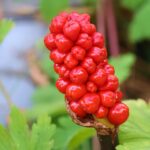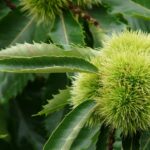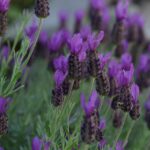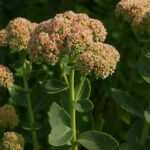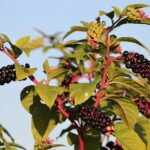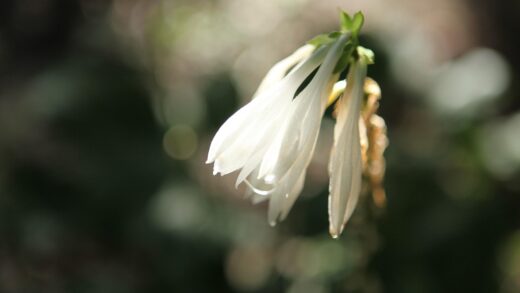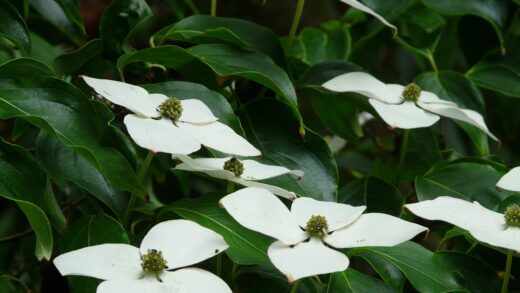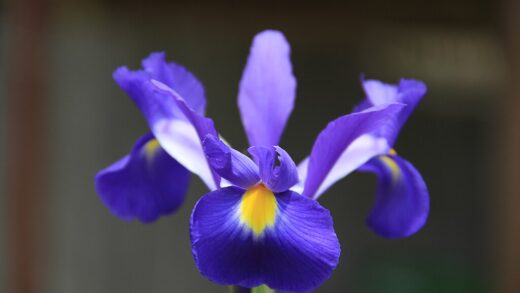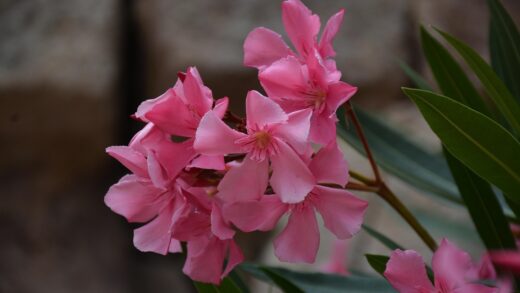Understanding the specific water requirements of the Chinese juniper is fundamental to its successful cultivation, as both overwatering and underwatering can lead to significant health problems. This species is renowned for its excellent drought tolerance once established, a characteristic that makes it a valuable component of low-maintenance and water-wise landscapes. However, this resilience is developed over time and is contingent upon proper irrigation practices, especially during the plant’s juvenile stages. Effective water management involves recognizing the plant’s needs through different life stages, adapting to seasonal and climatic variations, and employing proper irrigation techniques to promote a deep and healthy root system. A well-managed watering regimen is the key to ensuring the juniper’s vitality and longevity.
The Chinese juniper’s water needs are most critical during its establishment period, which typically encompasses the first one to two years after it has been planted in the landscape. During this formative stage, the plant is focused on developing an extensive root system that will serve as its anchor and primary source of water and nutrients for the rest of its life. A consistent and adequate supply of moisture is essential to fuel this root growth. The goal is to keep the soil around the root ball consistently moist, but crucially, not waterlogged. Allowing the soil to become completely dry during this period can cause stress and damage to the fine, developing roots, significantly hindering the establishment process.
Once the Chinese juniper becomes fully established, its water requirements diminish dramatically. The deep and widespread root system that develops makes the plant highly efficient at sourcing water from a large volume of soil, granting it remarkable resilience to dry conditions. For mature specimens, natural rainfall is often sufficient to meet their moisture needs in many temperate climates. Supplemental irrigation is typically only necessary during prolonged and severe periods of drought, especially when accompanied by high temperatures and desiccating winds. Overwatering an established juniper is a far more common problem than underwatering, often leading to fatal root rot diseases.
Several environmental factors influence the specific water needs of a Chinese juniper at any given time, necessitating a flexible approach to irrigation rather than a fixed schedule. Soil type is a primary consideration; sandy soils drain quickly and will require more frequent watering than heavy clay soils, which retain moisture for longer periods. The prevailing weather conditions, including temperature, humidity, wind, and recent rainfall, also play a significant role. A juniper planted in a hot, sunny, and windy location will lose water through transpiration more rapidly and require more frequent irrigation than one in a cooler, more protected site.
Recognizing the juniper’s water needs
The most reliable way to determine if a Chinese juniper needs water is to assess the soil moisture directly. This can be done simply by inserting a finger or a small trowel into the soil to a depth of two to four inches near the plant’s root zone. If the soil at this depth feels dry to the touch, it is an indication that watering may be needed, particularly for a young plant. For established plants, it is generally best to wait until the top several inches of soil are quite dry before considering supplemental irrigation. This method avoids the pitfalls of a rigid schedule, allowing for watering based on the plant’s actual needs.
Visual cues from the plant itself can also signal water stress, although these should be interpreted with caution as they can sometimes mimic symptoms of disease. An early sign of underwatering is often a subtle dulling or graying of the foliage color. As the water stress becomes more severe, the needles may begin to feel dry and brittle, and the tips of the branches may start to droop. If the condition persists, the foliage will begin to turn yellow or brown and die back. It is important to provide water at the first signs of stress to prevent irreversible damage to the plant.
Conversely, the signs of overwatering can be more insidious and are often mistaken for underwatering, leading to a detrimental cycle of adding more water. A key symptom of overwatering and the associated root rot is the yellowing or browning of foliage, which may also appear wilted because the damaged roots are unable to absorb water and nutrients effectively. The soil around an overwatered plant will remain consistently damp or soggy, and there may be a musty or sour smell emanating from the soil due to anaerobic conditions. Distinguishing between the symptoms of too much and too little water is critical, and checking soil moisture is the definitive way to make the correct diagnosis.
The life stage of the juniper is a primary determinant of its water requirements. A newly planted juniper requires frequent and consistent watering to support its establishment, while a mature, well-established plant can thrive with very little supplemental irrigation. It is also important to consider the specific cultivar, as some smaller or dwarf varieties grown in containers will have different watering needs than large specimens planted in the ground. Container-grown junipers have a limited volume of soil that can dry out much more quickly than garden soil, necessitating more frequent monitoring and watering, especially during warm weather.
Irrigation techniques for established plants
For established Chinese junipers, the most effective irrigation technique is to water infrequently but deeply. This approach encourages the root system to remain deep in the soil profile, where moisture is more consistently available and temperatures are more stable. A deep watering moistens the soil to a depth of at least 12 to 18 inches, replenishing the moisture reservoir for the entire root zone. Shallow, frequent watering should be avoided, as it only wets the top few inches of soil and encourages the development of a shallow root system that is more vulnerable to drought and heat stress.
The best methods for delivering water to the root zone are those that apply it slowly, allowing it to be absorbed by the soil with minimal runoff or evaporation. Drip irrigation systems and soaker hoses are ideal for this purpose as they release water at a low rate directly onto the soil surface over the root area. This slow application ensures deep percolation and is highly water-efficient. If using a standard hose, it can be placed at the base of the juniper and allowed to run at a slow trickle for an extended period, moving it to different positions around the plant to ensure even distribution over the entire root zone.
The timing of irrigation can also impact its effectiveness and the health of the plant. Watering early in the morning is generally considered the best practice. At this time of day, cooler temperatures and calmer winds mean that less water is lost to evaporation, allowing more of it to soak into the soil. Morning watering also ensures that any moisture that gets on the foliage has the entire day to dry off, which significantly reduces the risk of fungal diseases that thrive in damp conditions. Watering in the evening should be avoided, as it can leave the foliage wet overnight, creating an ideal environment for pathogen development.
When watering an established juniper during a drought, it is crucial to apply a sufficient volume of water to make a real difference. A light sprinkling will do little more than wet the mulch and the soil surface. A general rule of thumb is to provide approximately 10 gallons of water for every inch of the trunk’s diameter. This volume should be applied slowly to ensure it soaks in deeply. After watering, it is beneficial to check the soil moisture again a few hours later to confirm that the water has penetrated to the desired depth, ensuring the effort has effectively replenished the moisture available to the plant’s roots.
Watering young and newly planted junipers
The watering strategy for young and newly planted Chinese junipers is markedly different from that for established plants, focusing on consistency and frequency to support root development. Immediately after planting, a thorough, deep soaking is the most critical first step. This initial watering settles the soil around the root ball, eliminates air pockets, and provides the moisture needed to ease the transition into the new environment. This should be a slow and deliberate process, ensuring the entire root ball and the surrounding backfilled soil are completely saturated.
During the first few weeks after planting, the soil should be checked every two to three days and watered whenever the top couple of inches begin to feel dry. The goal is to maintain consistent moisture without creating soggy, waterlogged conditions. As the plant begins to establish, over the course of the first growing season, the frequency of watering can be gradually reduced, but the depth of each watering should remain significant. This encourages the roots to grow deeper and further out into the surrounding soil in search of moisture, which is the foundation of future drought tolerance.
A practical method for watering new junipers is to use the soil berm or basin technique created during planting. Filling this basin with water and allowing it to soak in slowly ensures that the water is delivered directly to the root zone where it is most needed. This method is particularly effective in preventing runoff and ensuring deep penetration of the water. Typically, applying 5 to 10 gallons of water per plant during each watering session is sufficient to moisten the root zone adequately, though this amount may need adjustment based on the plant’s size and the soil’s drainage characteristics.
It is important to continue this regimen of consistent watering throughout the first one to two full growing seasons, including periods of dry weather in both summer and fall. A common mistake is to reduce watering too soon, assuming the plant is established before it actually is. An underdeveloped root system can leave the young juniper vulnerable to drought stress and winter injury. By providing reliable moisture for the first couple of years, the plant is given the best possible start, resulting in a healthier, more vigorous, and ultimately more resilient specimen in the long term.
Adapting irrigation to seasons and climate
Effective irrigation requires adapting practices to the changing seasons, as a juniper’s water needs fluctuate throughout the year. During the active growing season of spring and summer, when temperatures are higher and the plant is producing new growth, water demand is at its peak. This is the time to monitor soil moisture most closely and provide supplemental water as needed, especially for young plants. Conversely, as temperatures cool in the autumn and the plant’s growth slows, its water requirements decrease. Watering frequency should be tapered off accordingly to prevent the soil from becoming overly saturated heading into winter.
In climates with cold winters, proper late-fall watering is a crucial step in preparing the Chinese juniper for the dormant season. Evergreens like junipers continue to lose water through their needles via transpiration even during the winter, a process that can lead to winter burn if the ground is frozen and the roots cannot replenish the lost moisture. To mitigate this, it is important to ensure the soil is adequately moist before the first hard freeze. Providing a final deep watering in late autumn after the leaves have fallen from deciduous trees but before the ground freezes will charge the soil with moisture that the roots can access during winter thaws.
In regions with hot, arid climates, managing water for Chinese junipers presents a different set of challenges. While the species is drought-tolerant, the extreme heat and low humidity of a desert or semi-arid environment can place significant stress on the plant. In these conditions, even established junipers will likely require some supplemental irrigation during the hottest parts of the summer to remain healthy. The use of a thick layer of organic mulch is especially important in these climates to conserve every bit of soil moisture and to keep the root zone cooler.
Container-grown Chinese junipers require a distinct watering approach that is highly dependent on their immediate environment. The limited soil volume in a pot or container dries out much more quickly than garden soil, meaning these plants need to be watered far more frequently. During the summer, a containerized juniper may need watering every day or every other day. It is essential to water thoroughly until water is seen draining from the bottom of the pot, ensuring the entire root ball is moistened. In winter, container plants are also more susceptible to root freezing, so they may need to be moved to a protected location and watered sparingly, just enough to keep the soil from completely drying out.










